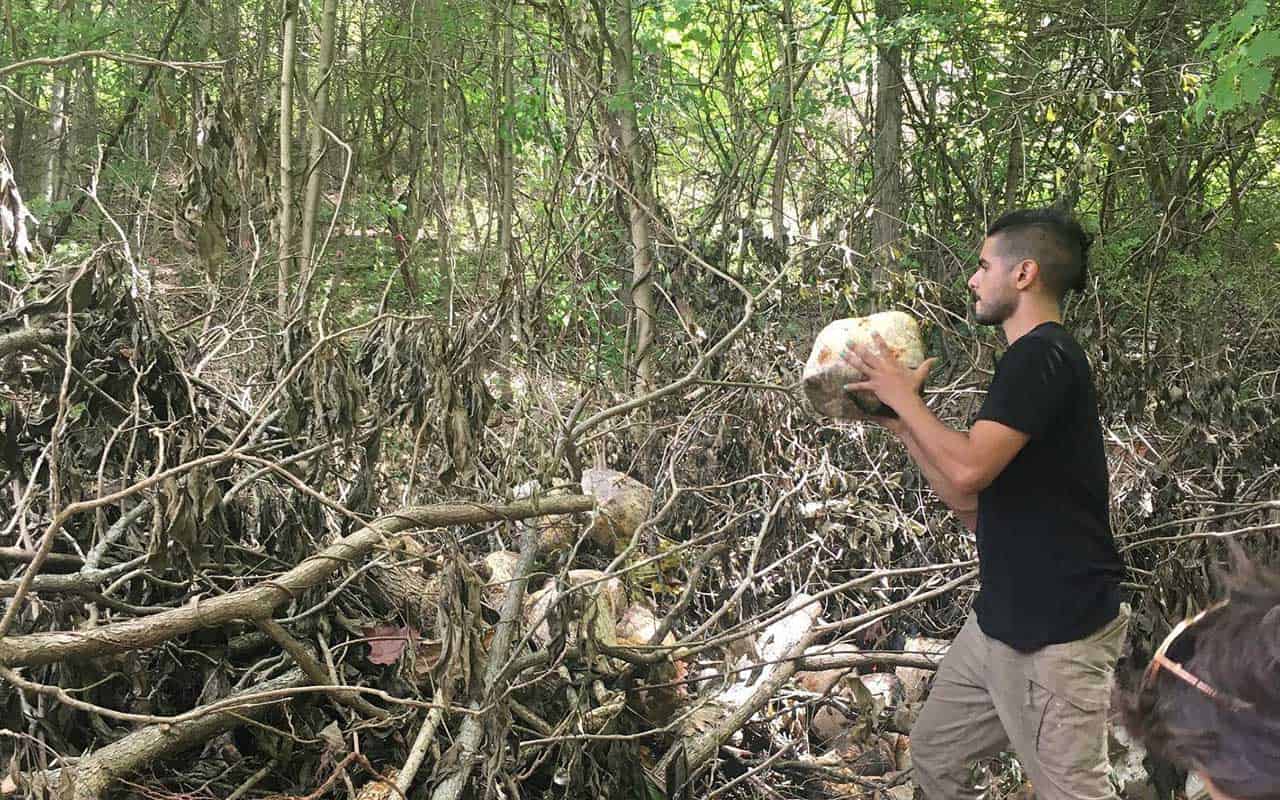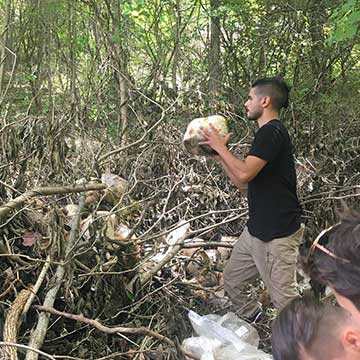This Month’s Featured Article

Education In Sustainability
 The concept of sustainability touches many aspects of society. From personal growth to economic development, the idea of maintaining a certain standard of principled development is viewed by most as one of the keys to existence. The same can be said of our environment and the ways in which we impact the natural spaces we occupy. For decades, modern conservation movements have modeled their efforts around the principles of sustainability. That is, both continuing the proactive work toward effecting change for a cleaner physical world as well as the avoidance of the depletion of natural resources in order to maintain an ecological balance.
The concept of sustainability touches many aspects of society. From personal growth to economic development, the idea of maintaining a certain standard of principled development is viewed by most as one of the keys to existence. The same can be said of our environment and the ways in which we impact the natural spaces we occupy. For decades, modern conservation movements have modeled their efforts around the principles of sustainability. That is, both continuing the proactive work toward effecting change for a cleaner physical world as well as the avoidance of the depletion of natural resources in order to maintain an ecological balance.
Conservation starts with education
For many grassroots organizations, conservation starts with education. In Dutchess County, NY, far reaching sustainability principles have begun to take root thanks to the Amenia Regenerative Center or ARC 38. ARC 38 is a 501(c)(3) nonprofit environmental education center situated on 153 acres of protected wetland, agricultural meadow, and forested hills teeming with biodiversity in Wassaic, NY. Through their educational efforts and programs, the leaders at ARC 38 have relaunched their organization behind the fundamentals of learning. Not only showing area locals innovative ways to sustain a healthy environment, but reinforcing the ideals of hard work that help societies grow and develop.
Sustainability director Dan Sheridan, production director Ethan Moran, and communications director Anna Marden took a few moments to discuss the recent evolution of ARC 38, some of the projects they are currently working on and what the future holds for volunteer-led community organization.
How did the Amenia Regenerative Center come together and how would you describe the land where you work?
Dan: ARC 38 started renting the land from radical pacifist Bill Henry close to a decade ago. It became a state-recognized non-profit organization sometime in 2015 and federally recognized in 2017. In the last year and a half, the new leadership team took over and we are working hard to rebuild the organization from the ground up.
Ethan: We were looking for a more effective way to proactively introduce the community to the idea of sustainability. When Dan, Anna, and I took on the leadership roles here last year, we really got to work on both getting the organization back on its feet and bringing in as many members of the community as possible to build something together..
We began with a large cleanup effort where we removed 20 acres worth of invasive species of plants and around 50,000 pounds of trash from the land left behind by humans. After which we brought in an arborist and completed a very extensive evaluation of the property and the species living here in order to point us in the right direction to bring it all back to life.
What have been some of your biggest initiatives since the revitalization of ARC 38?
Dan: I think our biggest achievement this year has been the installation of our greenhouse. A local neighbor was gracious enough to donate the greenhouse to us in order for us to be able to implement year-round cultivation. I have a background in greenhouse management, environmental science, environmental conservation as well as landscape design. Adding the greenhouse will allow me to further understand the breadth of the land and how to help keep the plant species here healthy.
We were also able to launch our mushroom inoculation project which was a fantastic undertaking aimed at removing invasive species from the land here. Thus far we have been able to construct a 1,000 ft. long, 6 ft. tall, 15 ft. wide inoculated mushroom wall. By removing the invasive species and creating the wall we’ve also created a new type of soil amendment. Apart from the vital food resources they create for the local habitat, the mushrooms themselves become a new form of topsoil needed to push out the invasive species and allow sustainable plants to grow here.
How would you encapsulate ARC 38 as an organization that connects with the surrounding community?
Ethan: As an organization we are classified as an environmental and outdoor survival education center. Converting the land into a permaculture oasis is something you could say is phase one of a three phase plan we have here. Creating a local ecosystem that sustains itself as well as the people working the land leads into the educational aspect regarding everything we plant and build. Every bit of work we do here to create a sustainable landscape is transformed into a workshop for the community. People are welcome to come on site and learn the essence of sustainability. Providing a local resource for the community is one of our primary goals. Eventually we will be able to produce enough quality, organic food for both restaurants as well as local food pantries.
Anna: With the challenges presented last year, we didn’t get the chance to offer those workshops. This year, we are very much building from the ground up. As part of that, we have had an enormous amount of support from volunteers who dedicated their time to helping us rebuild our infrastructure. Of course, all of the volunteer activity has followed COVID protocols and will continue to do so.
Is there an initiative or goal that ARC 38 is looking forward to tackling this year?
Ethan: As part of our continuing mushroom cultivation project, we receive donations of anywhere from 2,000 to 15,000 pounds of inoculated mushroom bricks every single week. As part of that process, we are always looking for volunteers to help us sort those bricks and place them into the brush wall in order to continue to cultivate the land we occupy. Our goal is to use the inoculation project to create a natural resource that helps support biodiversity. The mushroom bricks themselves provide food for local people and animals. In addition to remediating the land itself, the mushrooms add to the natural beauty of the landscape.
Dan: We are also hoping to accomplish the implementation of gas digesters for the management of both human and animal waste. These state-of-the-art systems are basically capable of converting a variety of waste products and converting them into liquid fertilizer and methane gas. Fertilizer can be used in organic food orchards and the “biogas” can be converted into a form of pure natural gas as a sustainable energy source. I have experience building these systems and am excited about the prospect of bringing them here to the Hudson Valley. Without the five pillars of sustainability you obviously cannot live a sustainable life, so that’s what we’re hard at work on here at ARC 38.
Some of the other big projects we have going on this year are our native plant nursery and seed collection, maple tapping, invasive plant removal, bioremediation, forest maintenance, greenhouse management, and cultivation. We are also looking into cloning grafting and bioponic cultivation, honey bee research, native food cultivation, reclaiming the fruit orchard which contains apples, cherries, peaches, pears, plums, and mulberries as well as a forgotten vineyard with grape vines that are 9” in diameter. We offer a space for folks to learn about techniques and technologies for long term sustainability through permaculture and land stewardship. Our unique location provides many microclimates allowing for the growth and cultivation of a wider variety of native species.
Anna: One of our most vital resources are volunteers. We are not only trying to implement sustainable conservation practices here, we are trying to build a sustainable relationship with the community. We want to re-engage with our neighbors and we need everyone’s support in order to achieve that goal. We are rebuilding something here, and we want to accomplish that together. Volunteers help us educate the public and grow the infrastructure we need in order to move forward. •
Follow ARC 38 on social media @theARC38 on Facebook and @arc38_
wassaic on Instagram. To join the much needed team of volunteers, become an ARC 38 member by visiting arc38.org/join.


